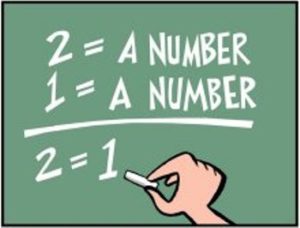Beware the “fallacy of the inverse”
August 12, 2018 A Tax Code provision about pollution-control exemptions has two subparts. Part 1 says: “A person seeking an exemption under this section shall provide to the chief appraiser a copy of the letter [issued by the TCEQ’s executive director about eligibility].” Part 2 says: “The chief appraiser shall accept a final determination by the executive director . . . that the facility . . . is used wholly or partly as pollution control property.”
A Tax Code provision about pollution-control exemptions has two subparts. Part 1 says: “A person seeking an exemption under this section shall provide to the chief appraiser a copy of the letter [issued by the TCEQ’s executive director about eligibility].” Part 2 says: “The chief appraiser shall accept a final determination by the executive director . . . that the facility . . . is used wholly or partly as pollution control property.”
In Panda Sherman Power LLC v. Grayson Central Appraisal District, all parties agreed that if a person obtained a “positive use determination” from the TCEQ, that would bind the chief appraiser. Panda argued that the statute was silent about a “negative use determination,” and thus, making such a determination conclusive would create a “fallacy of the inverse,” among other statutory-interpretation problems.
The Fifth Court disagreed: “[I]f the taxpayer does not provide the chief appraiser with the letter containing a positive use determination, then the taxpayer has not met the requirement in the first sentence of paragraph [1] for entitlement to the tax exemption. The binding effect of the executive director’s negative use determination does not come from the second sentence of paragraph [1] and the application of the fallacy of the inverse.” No. 05-17-00267-CV (Aug. 7, 2018) (mem. op.)